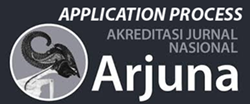Empowerment Strategies for the Poor Based on Spatial Patterns in Tapin Regency
DOI:
https://doi.org/10.59653/ijmars.v2i03.924Keywords:
Poverty, spatial patterns, strategies, SWOT, Community EmpowermentAbstract
This research aims to analyze whether education, health, unemployment, asset ownership, and road infrastructure factors simultaneously influence the spatial patterns of poverty in Tapin Regency. The final results will determine strategies for empowering the poor in Tapin Regency. This study employs a quantitative approach with statistical techniques and follows a descriptive correlational design. The results show that education, health, unemployment, asset ownership, and road infrastructure variables have a significant partial and simultaneous impact on poverty in both the three sub-districts and Tapin Regency as a whole. The primary strategy for empowering the poor in Tapin Regency is the Strength-Opportunity (S-O) strategy. This involves enhancing the role of companies through Corporate Social Responsibility (CSR) programs aimed at empowering the poor by developing superior commodity products and increasing the number of local entrepreneurs as part of the local government's priority strategy to reduce poverty. The recommendations for the Tapin Regency Government to empower the poor economically include improving the education and health levels of the community, partly by providing infrastructure to facilitate access to educational and health facilities, reducing unemployment through increased labor-intensive programs, and constructing road infrastructure to alleviate the isolation of areas prone to poverty.
Downloads
References
Ali, K., Partridge, M., & Olfert, M. (2007). Can Geographically Weighted Regressions Improve Regional Analysis and Policy Making? International Regional Science Review. 30(3):300–329., https://doi.org/10.1177/0160017607301609.
Arikunto, S. (2016). Prosedur Penelitian Suatu Pendekatan Praktik. Jakarta: Rineka Cipta.
BPS. (2022). Kabupaten Tapin Dalam Angka 2021.
D’Aveni, R., & Robert, G. (1995). Hypercompetition. New: The Free Press.
Digdowiseiso, K. (2019). Teori Pembangunan. Jakarta Selatan: Lembaga Penerbitan Universitas Nasional (LPU-UNAS).
Ghozali, I. (2018). Aplikasi Analisis Multivariate Dengan Program IBM SPSS 25. Semarang: Badan Penerbit Universitas Diponegoro.
HUNG, C. W. (2005). An Efficient k-Means Clustering Algorithm Using Simple Partitioning. Journal of Information Science and Engineering, XXI (1), 1157-1177.
Iskandar, Hartoyo, Sumarwan, U., & Khomsan, A. (2007). Faktor-faktor yang Mempengaruhi Kesejahteraan Keluarga. Universitas Sumatera Utara: 133-141.
Kartawinata, B. R., Akbar, A., Hidayat, A. M., Witarsyah, D., Hamami, F., Pratiwi, O. N., Ahmad, M., Zahid, A., Sujak, A. F. bin A., Razali, R. R. R., & Mangsor, M. (2024). Counseling on Cooperative Management as a Driving Force for Economic Empowerment at the Sukamiskin Islamic Boarding School Bandung. Journal of Community Service and Society Empowerment, 2(02). https://doi.org/10.59653/jcsse.v2i02.708
Kuncoro, M. (2004). Otonomi Daerah dan Pembangunan Daerah: Reformasi,Perencanaan, Strategi, dan Peluang. Jakarta: Penerbit Erlangga.
Lincolin, A. (1999). Pengantar Perencanaan dan Pembangunan Ekonomi Daerah, Edisi Pertama. Yogyakarta: BPFE.
Mahardika, G. B., Asshofi, I. U. A., Wijaya, M. A. R., Ariestya, N. S., Shan, A. S. S., Safitri, R. H. R., Lestari, F. I., Albertus, A., Marisa, K., Hergiandari, G., & Handoyo, S. A. (2023). Pemberdayaan Masyarakat Melalui Program Agrowisata Di Desa Bojongnangka Kabupaten Pemalang. Journal of Community Service and Society Empowerment, 1(02 SE-Articles), 140–150. https://doi.org/10.59653/jcsse.v1i02.265
Mankiw, G. N. (2003). Teori Makro Ekonomi Terjemahan. Jakarta: PT Gramedia Pustaka Utama.
Musa, A. J. (2014). Analisis Faktor Yang Mempengaruhi Tingkat Kemiskinan Provinsi Provinsi Di Indonesia. Semarang: Skripsi. Universitas Diponegoro.
Nasir, M. M. (2008). Analisis Faktor-faktor yang Mempengaruhi Kemiskinan Rumah Tangga di Kabupaten Purworejo. Jurnal Eksekutif, Vol. 5 No. 4, Agustus, Jakarta: LIPI. .
Pearce, J. A., & Robinson, R. B. (2013). Manajemen Strategis: Formulasi, Implementasi, dan Pengendalian. Jakarta: Salemba Empat.
Rangkuti, F. (1997). Analisis SWOT . Teknik Membedah Kasus Berorientasi Konsep Perencanaan Strategis Untuk Menghadapi Abad Ke 21. Jakarta: Jakarta (Id).
Rosmedi, & Risyanti, R. (2006). Pemberdayaan Masyarakat. Sumedang: Alqaprit Jatinegoro.
Saifuddin, S. E. (2011). Konservasi Tanah dan Air. Bandung: Pustaka Buana.
Sajogyo. (2009). Golongan Miskin dan Partisipasi Dalam Pembangunan Desa. Bogor: Prisma.
Sauri, S., Jamaludin, A., Rosita, D., Farha, H. M., & Jaelani, J. (2023). Peranan BUMDes Dalam Pembangunan dan Pemberdayaan Masyarakat di Desa Taringgul Landeuh Kecamatan Kiarapedes Kabupaten Purwakrata. Jurnal Riset Multidisiplin Dan Inovasi Teknologi, 1(02), 50–58. https://doi.org/10.59653/jimat.v1i02.236
Seiler, M. J., & Rom, W. (2001). A Historical Analysis of Market Efficiency: Do Historical Returns Follow a Random Walk. Journal of Financial and Strategic Decision. Vol. 10. No.2. Tokyo: Kogakusha.
Sudaryono. (2017). Metode penelitian. Depok: Raja Grafindo Persada.
Sugiyono. (2008). Metode Penelitian Kuantitatif Kualitatif dan R&D. Bandung: Alfabeta.
Sukirno, S. (2004). Makroekonomi: Teori Pengantar. Jakarta: PT Raja Grafindo Persada.
Widyasworo, R. (2014). Analisis Pengaruh Pendidikan, Kesehatan, Dan Angkatan Kerja Wanita Terhadap Tingkat Kemiskinan Di Kabupaten Gresik (Studi Kasus 2008-2012). Jurnal Ilmiah, 1-17.
Wijayanto, R. D. (2010). Analisis Pengaruh PDRB, Pendidikan dan Pengangguran Terhadap Kemiskinan di Kabupaten / Kota Jawa Tengah Tahun 2005-2008. Skripsi. Semarang: Fakultas Ekonomi Universitas Diponegoro.
Downloads
Published
How to Cite
Issue
Section
Categories
License
Copyright (c) 2024 Evi Selvi Adriani Dewi Safitri, Fitriyadi, Yusuf Hidayat

This work is licensed under a Creative Commons Attribution-ShareAlike 4.0 International License.
Authors who publish with this journal agree to the following terms:
- Authors retain copyright and grant the journal right of first publication with the work simultaneously licensed under a Creative Commons Attribution-ShareAlike that allows others to share the work with an acknowledgement of the work's authorship and initial publication in this journal.
- Authors are able to enter into separate, additional contractual arrangements for the non-exclusive distribution of the journal's published version of the work (e.g., post it to an institutional repository or publish it in a book), with an acknowledgement of its initial publication in this journal.
- Authors are permitted and encouraged to post their work online (e.g., in institutional repositories or on their website) prior to and during the submission process, as it can lead to productive exchanges, as well as earlier and greater citation of published work (See The Effect of Open Access).
























